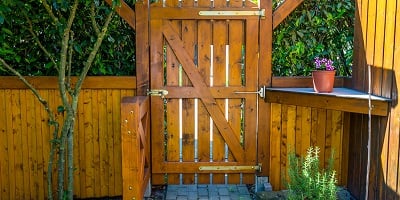
A lot of people decide to build a fence around their yard or garden area to keep out small or large animals that are eating their crops. However, a garden fence will only work if you know what is attacking your garden first. Therefore, if you have a client call for fence installation, you need to find out what they are hoping to keep out of their garden or yard.
If the fencing solution fails to keep predators out, consumers may still blame the construction company, not the actual fencing choice. Being well-informed can be the best way to ensure that the fencing solution you provide for customers is one that works. Of course, regardless of the type of fencing a customer ultimately chooses, make sure you have the F70G fence stapler on hand for easy installation. With the right tool in your arsenal, you can finish several fence construction projects in one day.
Deer Fences
Deer will eat just about anything out of a garden, from fruits and vegetables to the very leaves and blossoms on the plant. Deer can jump quite high and if they are aware there is a food source behind the fence, they will try even harder. For this reason, fence construction meant to address deer issues should be at least 8-10 feet high and slanted at a 45-degree angle to deter jumping deer. Also, fences should be built snug to the ground and stapled in solidly with an F70G fence stapler to prevent breakage from head butting.
Rabbit Fences
Rabbits can squeeze themselves through small spaces that make them look like nature's magicians. To keep rabbits out, a two-foot high chicken wire fence with small one-inch holes is your best bet. However, they will attempt to squeeze under or dig holes under the fencing, so you need to carve out the ground below the fence bottom and then bury it into the ground.
Cat and Dog Fences
Most cats and dogs won't actually eat a garden or crops, but they will stomp all over it and possibly urinate or defecate in it. A three-foot high mesh fence construction should be enough to keep cats from climbing over and dogs from knocking into it. However, the mesh fence needs to be anchored to strong posts with a firm fastener. The F70G fence stapler can make this type of fence construction a snap. At the bottom of the fence make sure to also bend the base of the fencing in to create a two-foot apron, similar to the rabbit fence, to stop dogs from digging into the garden.
Groundhog, Raccoon, and Opossum Fences
Keeping groundhogs, opossums, and raccoons out of crops or a garden can be tricky because they are all great climbers. For this reason, electric wire or unattached fencing at the top of the fence should be considered. The fence construction should be at least four feet tall with another 18 inches of unattached fencing at the top that will collapse on the animal as it tries to climb preventing it from reaching the top. All of these animals are also clever tunnel builders, so you will need to bury the fence at least a few inches into the ground.
Before starting any fence construction to protect a garden make sure to talk to your clients at detail and find out what pests they primarily want to keep out. Once you have a plan, grab your F70G gas-powered cordless fence stapler from BECK and knock out the job in just a few hours. Unsure of whether the F70G stapler is for you? Download this Gas Fence Stapler Brochure to find out why so many deck construction companies choose this handy, portable tool.
.svg.png)

